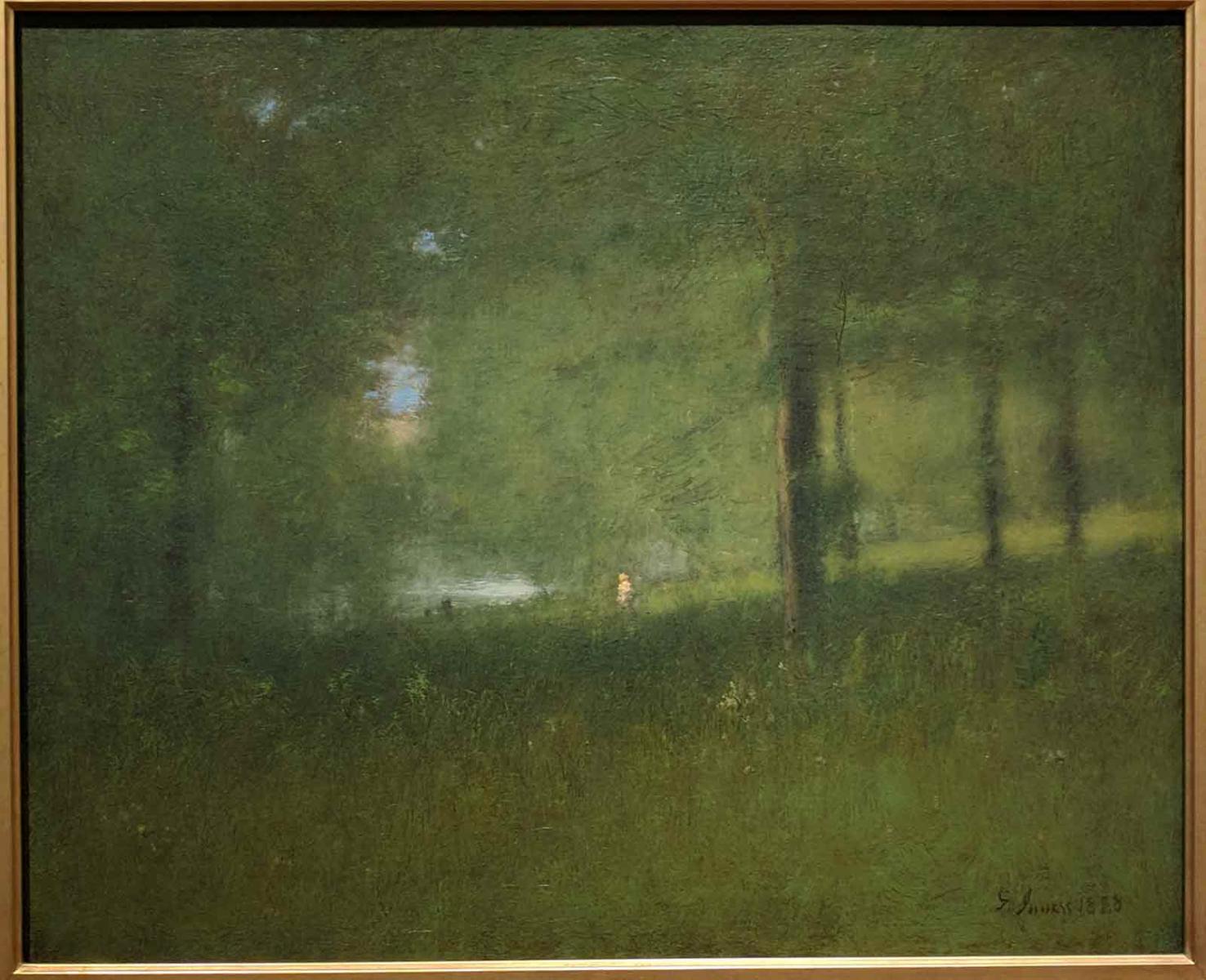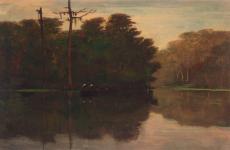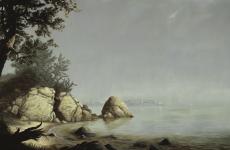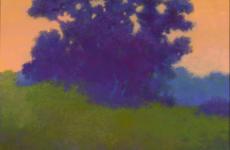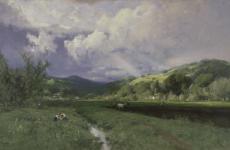George Inness
George Inness’s earliest paintings were made in the style of the Hudson River School. On a trip to France in 1853, however, he was exposed to the work of the Barbizon school of painters, who used a looser brushstroke and softer tonal qualities. He began painting landscapes with ethereal, atmospheric effects. The writings of Emanuel Swedenborg, which described the visual world as a metaphor for a higher metaphysical reality, also influenced him and became apparent in his paintings.
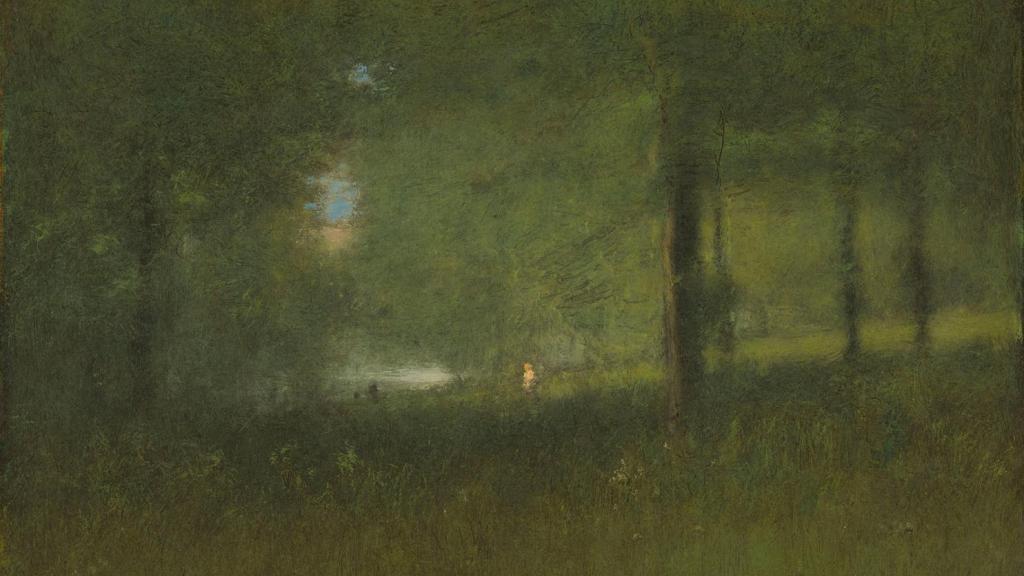
What is revealed and concealed in this painting?
This landscape was painted during the artist’s years in Montclair, New Jersey, when he created many landscapes that only existed in his imagination. Filled with lush, green trees and grasses, the scene draws inspiration from the Barbizon sous bois tradition associated with the forest of Fontainebleau, in which the viewer is situated deep within—and beneath—a light-dappled woodland or forest canopy.
Gift of Betsy R. Dingwell and Sandra R. Jones in honor of their father, Carl A. Rietz
